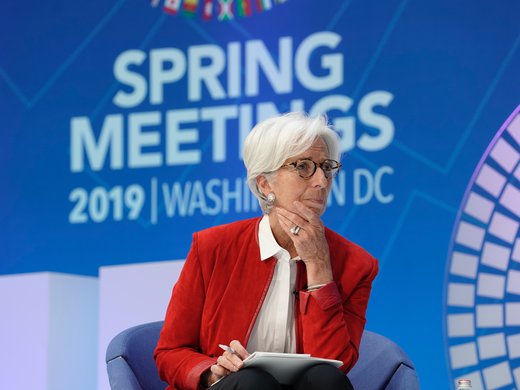Despite growing calls for scrutiny and reform of competition law around the world in the wake of rising corporate power, the urgency to curb monopolies is lacking in Canada.
While legal experts and think tanks work to assure policy makers we have the right rules in place, a close look at Canada’s record should give observers pause. Whether Canadian law can address challenges to competition is an increasingly open question, particularly in light of the rise of digital markets.
The title of a recent report by the Macdonald-Laurier Institute, Up to the Task, captures the general mood in much of Canada’s competition community well. While its authors, Anthony Niblett and Daniel Sokol, concede there may be a need for tweaks at the margins — for example, higher fines to reflect the increased scale of digital companies — they see nothing more than incremental reform, if that, as necessary.
But actions by our international partners, and the limits of our current laws in protecting competition, suggest that the status quo is worthy of deeper investigation.
It could be, perhaps, that Canadian policy makers had the foresight decades ago to craft a legal regime with the flexibility to respond adequately to ensuing major economic shifts. However, the confidence in the current state should be tempered by a recognition that the performance of Canada’s competition laws has yet to be thoroughly studied. And it belies the evidence that serious problems already exist in key areas of enforcement.
To begin, Canada is one of a shrinking number of peer countries that have not conducted a formal review of the effectiveness of its competition laws in the context of the rise of digital markets. Indeed, the last formal review of the Competition Act concluded well over a decade ago, in 2008, the same year Apple released the App Store.
Meanwhile, governments and regulators in the United States, the European Union, the United Kingdom and Australia all have conducted in-depth analyses of the performance of their competition laws in digital markets — analyses that have since prompted legislative or fiscal action, with increased scrutiny of dominant players as a common theme. Canada can capitalize on the work already done, but a lesson we should take away is that our peers found their own status quo to be lacking, and have already responded decisively.
In 2019, Navdeep Bains, the minister of innovation, science and economic development at the time, requested that Commissioner of Competition Matthew Boswell work with Bains’s departmental staff to review the fitness of Canada’s Competition Act for digital markets. While commentary by the commissioner suggests this work is ongoing, no public reports have emerged from that request, nor is there any timeline for any to emerge. Competition does not appear to be an element of the government’s near-term digital policy agenda. There was just one reference to fair competition in the Liberals’ 2021 platform, and other digital policy priorities, such as broadcasting reform, online harms, and news media funding, compete for the government’s attention. In short, inertia persists, despite repeated public calls for a comprehensive review of the Competition Act by Commissioner Boswell, who has highlighted the limits of enforcement in less glamorous but important markets such as industrial waste management.
This lack of urgency is cause for concern when assessing the performance of merger enforcement, a cornerstone of Canada’s competition law. Canada’s merger laws provide the Competition Bureau with the authority to challenge transactions that have the potential, in the language of the law, to “substantially lessen or prevent competition.” Effective merger law is critical, because mergers can be employed by dominant players to quash nascent competitors, which can lead to lasting harms such as higher prices, lower quality and innovation stagnation for the individuals and businesses that depend on competitive markets.
Unfortunately, Canada’s enforcement track record regarding mergers is quite poor. For one, the Competition Act, in particular section 96, known as the efficiencies defence, allows for mergers to monopolize, where competition in a market is extinguished and consumers must rely on the sole remaining business for a given good or service. In the past, mergers of this kind have left Canadians at the whim of a single corporation for access to essential goods such as propane.
Further, in the nearly 20 merger challenges that have gone before the Competition Tribunal, which first hears civil competition cases, the Bureau has only been successful in a single challenge. While there is no magic number of cases for the government to win to prove our competition regime is up to snuff, a regime in which interventions are practically never successful does not inspire confidence.
It is no surprise, then, that rather than taking these potentially harmful transactions to court, the Competition Bureau is more likely to negotiate consent agreements with merging parties to remedy the harmful effects of a merger. These agreements can include conduct requirements, such as commitments not to raise prices for a set period of time, or divestment of assets away from the merged company to bolster another competitor, for example, gas stations in markets with few remaining competitors, in exchange for allowing a merger to proceed.
Thankfully, Canada is not entirely at a standstill when it comes to competition. Earlier this year, the Competition Bureau received its first funding increase in more than a decade, to be rolled out over five years.
But there are two problems with Canada’s approach to merger remedies.
First, the standard for imposing remedies is not preserving or restoring competition but removing the “substantial” from a “substantial lessening or prevention of competition.” While this point may seem pedantic, it means that even a successful remedy accepts some degree of lost competition. That lowers the bar for the pro-competitive arguments merging parties must make to justify their proposed transaction.
Second, there is little to no public evidence on the efficacy of these remedies in addressing the alleged harms caused by a given merger. Unlike competition enforcers in the United States, Canada’s Competition Bureau cannot collect the data needed to assess whether remedies have had their intended effect, or whether the decision not to challenge a merger resulted in harms to Canadians. Instead, the Competition Bureau must rely on voluntary interviews of individuals and organizations affected by a given merger, the last study of which was published in 2011.
In the digital space, there have also been what appear to be material enforcement misses, such as Dye and Durham’s recent price hikes on critical legal software, some as high as 563 percent, following what has been described as a “string of acquisitions.” The management of Dye and Durham is simply following a strategy encouraged by Canada’s lax approach to merger enforcement. It is more likely than not that businesses across Canada are following suit. Outcomes such as these — companies drastically raising prices for consumers after cornering a market through acquisitions — are well within the bounds of traditional competition analysis and should give policy makers pause.
Thankfully, Canada is not entirely at a standstill when it comes to competition. Earlier this year, the Competition Bureau received its first funding increase in more than a decade, to be rolled out over five years. A share of this, the organization has indicated, will go to funding a Digital Enforcement and Intelligence Branch focused on competition issues in digital markets.
This is a positive step. Yet additional funding does nothing to address underlying limitations in the design of our laws. It’s also worth noting, as Commissioner Boswell recently raised, that Canada’s merger enforcement regime will not benefit from these additional funds.
Other countries have had the foresight to do the hard work of looking inward to see whether their competition laws are suited for the challenges of digital markets; Canada should do the same. Canadians deserve a deeper assessment of the current limitations of the laws that should protect us from the harms of monopoly power.



